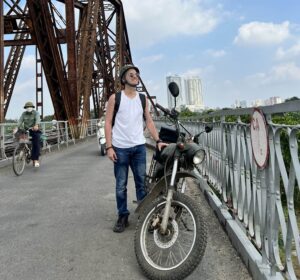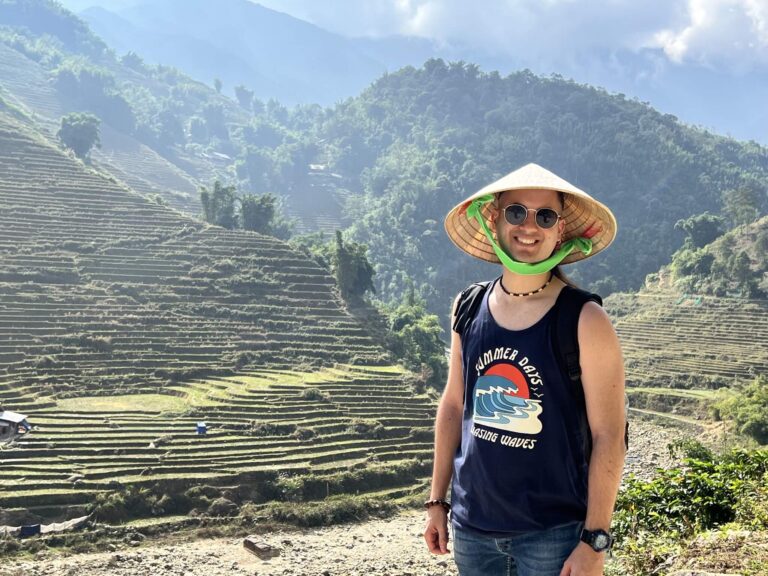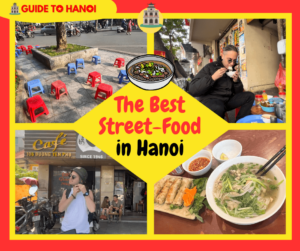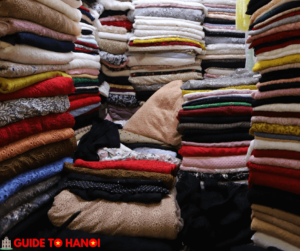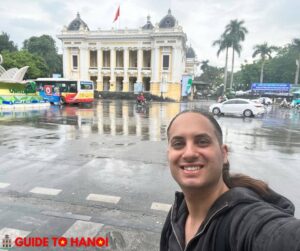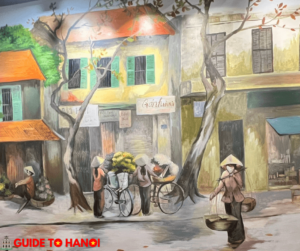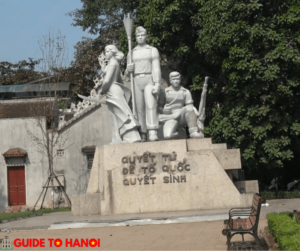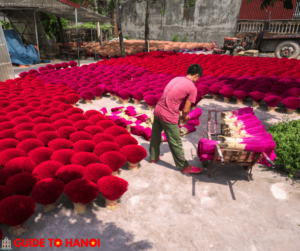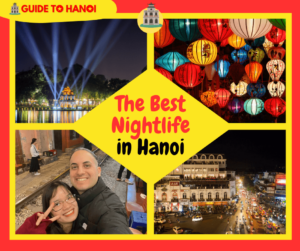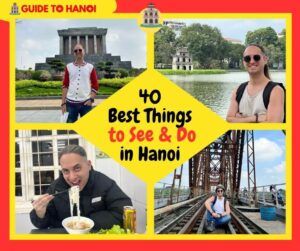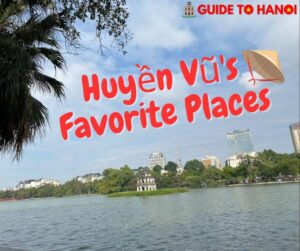Photography in Hanoi, Vietnam, is a vibrant and rapidly evolving art form that reflects the city’s rich culture, history, and contemporary life.
Hanoi, the capital of Vietnam, offers a myriad of photographic opportunities for both amateur and professional photographers.
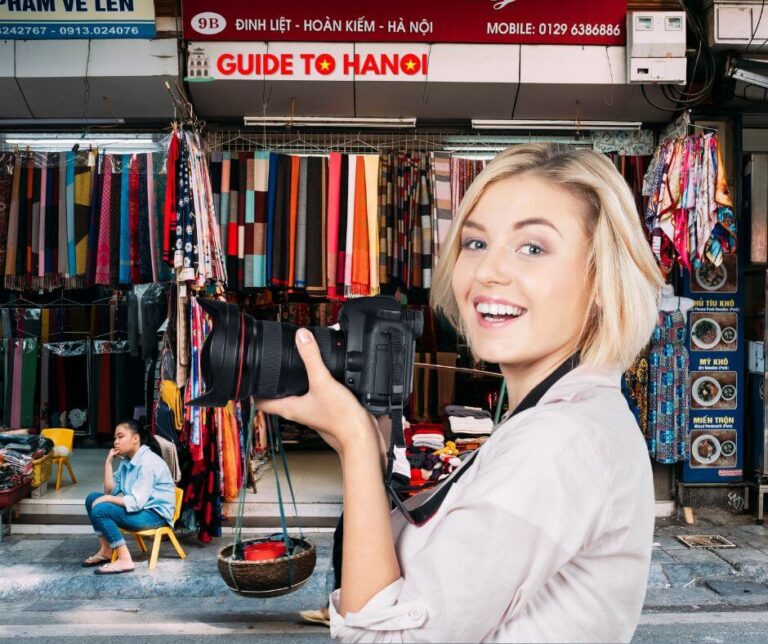
Here are some key aspects of photography in Hanoi:
Cultural Diversity
Hanoi is a melting pot of various cultures and traditions. The city boasts a rich history, and its architecture blends traditional Vietnamese design and French colonial influences.
This diversity provides photographers various subjects, from ancient temples and pagodas to colonial-era buildings and modern skyscrapers.
Street Photography
Hanoi’s bustling streets, markets, and neighborhoods provide a vibrant backdrop for street photographers. The Old Quarter, in particular, with its narrow winding streets, street vendors, and bustling activity, is a popular location for capturing candid shots of daily life.
Street Food Photography
Hanoi is renowned for its delicious street food. Photographers often focus on capturing the colors, textures, and flavors of the city’s culinary scene, from steaming bowls of pho to fresh spring rolls and sizzling banh mi sandwiches.
Historical Landmarks
Hanoi is home to numerous historical landmarks ideal for architectural and documentary photography.
The Ho Chi Minh Mausoleum, One Pillar Pagoda, and the Temple of Literature are just a few examples of iconic locations that attract photographers from all over the world.
People and Portraits
Hanoi’s people are friendly and photogenic. Engaging with the locals and capturing their portraits is a rewarding experience. Traditional clothing, such as the Ao Dai, worn by many Vietnamese women, adds a unique and colorful dimension to portrait photography.
Festivals and Celebrations
Hanoi hosts various cultural festivals and events throughout the year, providing photographers with opportunities to capture vibrant parades, traditional ceremonies, and celebratory moments.
Natural Beauty
While Hanoi is a bustling city, it also has its share of natural beauty. The city’s numerous lakes, such as Hoan Kiem Lake and West Lake, offer serene settings for landscape and nature photography.
Photography Workshops and Tours
Hanoi has a thriving community of photographers and photography enthusiasts. You can find photography workshops, tours, and meetups that allow you to explore the city and improve your photography skills.
Art Galleries and Exhibitions
Hanoi boasts a growing number of art galleries and exhibition spaces that showcase the works of local and international photographers. These venues are great for gaining inspiration and insights into the photography scene in the city.
Photography Equipment and Services
Hanoi has a well-developed infrastructure for photography equipment and services, making it relatively easy to rent or purchase gear and access photo processing facilities.
In conclusion, Hanoi offers a rich tapestry of photographic opportunities, from its cultural diversity and historical landmarks to its vibrant street scenes and culinary delights.
Whether you’re a seasoned photographer or a novice looking to hone your skills, Hanoi is a city that can inspire and captivate with its visual storytelling potential.
Photography Etiquette in Hanoi
When practicing photography in Hanoi or any other location, it’s essential to respect local customs and people.
Here are some photography etiquette guidelines to follow in Hanoi:
Ask for Permission
Always ask permission before photographing a person, particularly when taking close-up portraits. A friendly smile and a polite gesture can go a long way in establishing rapport.
Respect Privacy
Some people may be uncomfortable having their picture taken, so it’s essential to respect their privacy and wishes. If someone declines, move on to another subject.
Be Discreet
When photographing people in candid situations, be discreet and use a telephoto lens to maintain a comfortable distance. Avoid invading people’s personal space.
Respect Religious Sites
When visiting temples, pagodas, or churches, remember the rules and customs. Some places may prohibit photography inside, or you may need to remove your shoes before entering.
No Flash
In many cultural and religious sites, using flash photography is discouraged or prohibited. Always check for signage or ask for permission when in doubt.
Dress Respectfully
If you plan to visit religious or traditional sites, dress modestly and appropriately. This is a sign of respect for the local customs.
Environmental Considerations
Be mindful of your impact on the environment. Avoid trampling on delicate vegetation or disturbing wildlife while taking photos in natural settings.
What Not to Film While Visiting the City:
Military and Government Facilities
It is generally not advisable to take photos or film military, border checkpoints, airports, and government facilities.
Doing so can lead to misunderstandings or legal issues.
Ho Chi Minh
Please don’t take photos of Ho Chi Minh, the revered former leader of Vietnam, in his glass coffin inside Ho Chi Minh’s Mausoleum!
Photography is strictly prohibited inside the mausoleum, and talking or making noise disrespects Vietnamese customs.
This rule is strictly enforced, and violators may face legal consequences.
With that saying, it’s okay to take pictures outside the mausoleum.
Private Residences
Avoid photographing or filming private residences without permission. Respect people’s privacy, and be mindful of local laws regarding this.
Children
When photographing children, exercise extreme caution and sensitivity. Always obtain parental consent before taking pictures of minors.
Commercial Interiors
Some businesses and shops may have policies against photography inside their establishments.
Always ask for permission before taking pictures in commercial spaces.
Public Disturbances
If you encounter protests or public disturbances, it’s generally best to avoid photographing them.
Engaging in such situations can be risky and may lead to confrontations with authorities.
People Without Consent
As mentioned, always obtain permission when photographing people, especially in intimate or candid situations.
Remember that each location and situation may have unique customs and guidelines.
It’s essential to research and be aware of local sensitivities and respect the people and places you are photographing.
Being a responsible and considerate photographer will help you capture beautiful images while fostering positive interactions with the local community.
| Aspects of Photography in Hanoi | Highlights |
|---|---|
| Cultural Diversity | Blend of traditions and architectural diversity |
| Street Photography | Bustling streets and vibrant markets |
| Street Food Photography | Delicious and colorful culinary scenes |
| Historical Landmarks | Iconic sites with rich history |
| People and Portraits | Engaging with locals and traditional clothing |
| Festivals and Celebrations | Colorful parades and traditional ceremonies |
| Natural Beauty | Serene lakes and beautiful landscapes |
| Photography Workshops and Tours | Opportunities to improve your skills |
| Art Galleries and Exhibitions | Showcasing local and international photography |
| Photography Equipment and Services | Access to gear and processing facilities |
To sum up
In conclusion, navigating the world of photography in Hanoi requires more than technical skills and creative vision; it demands a profound respect for the local culture and a keen sensitivity to the people and places you encounter.
By adhering to the established etiquette, such as seeking permission and respecting privacy, you not only ensure that you capture the essence of this vibrant city but also build positive connections with its inhabitants.
Furthermore, understanding what not to film while visiting Hanoi underscores the importance of cultural awareness and the need to respect local regulations and sensitivities.
Photography in Hanoi is not just about taking pictures; it’s about engaging with a rich tapestry of life, culture, and history and doing so with a deep appreciation for the city and its people.
By following these guidelines, you can be a responsible and considerate photographer while immersing yourself in the photographic opportunities this remarkable city has to offer.

